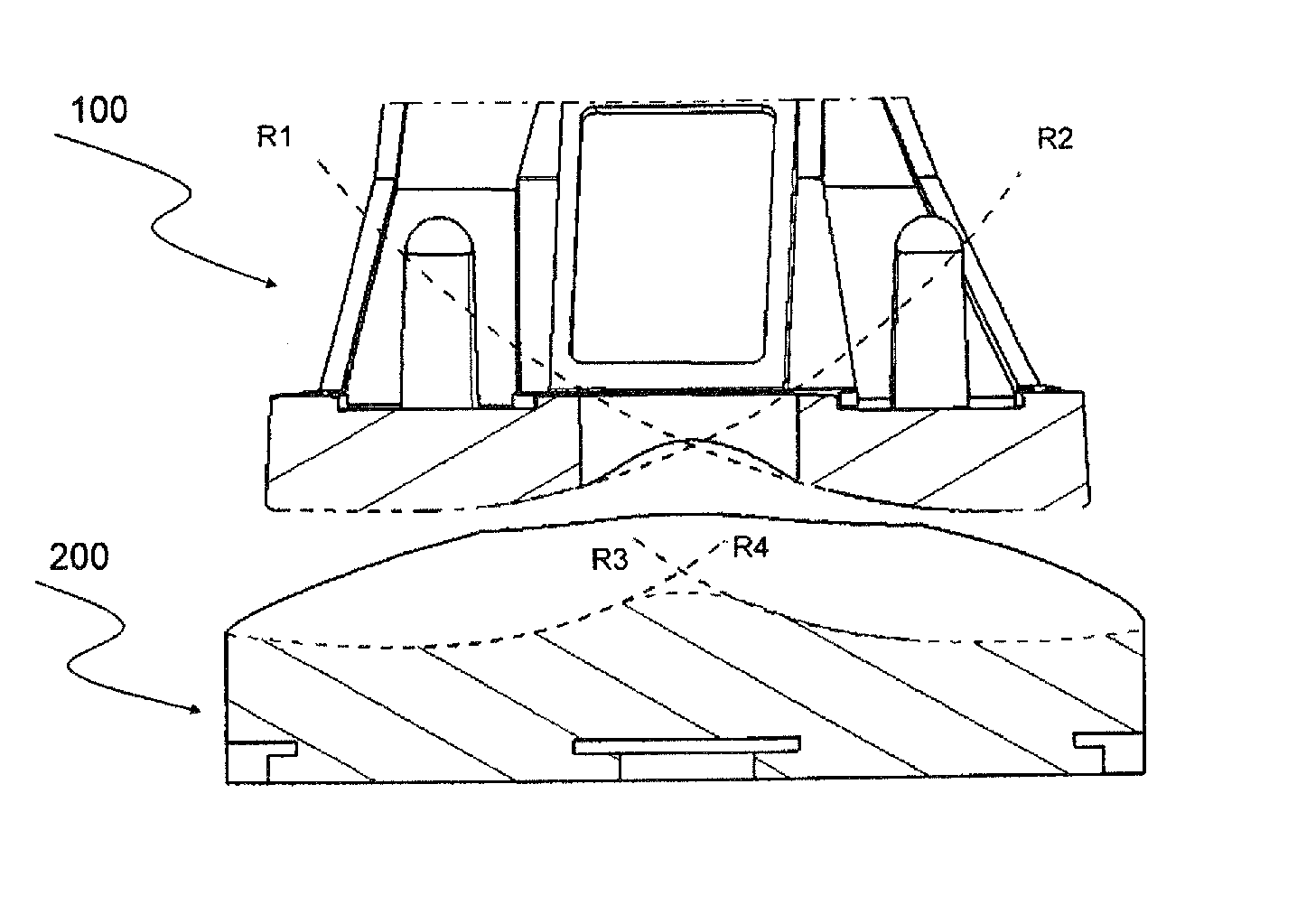Artificial knee joint
a knee joint and artificial technology, applied in knee joints, prostheses, medical science, etc., can solve the problems of increasing strength, increasing wear properties, and completely different design challenges, and achieves normal kinematic function, maximum flexion, and high degree of flexion
- Summary
- Abstract
- Description
- Claims
- Application Information
AI Technical Summary
Benefits of technology
Problems solved by technology
Method used
Image
Examples
Embodiment Construction
[0044]As used herein, the following directional definitions apply. Anterior and posterior mean nearer the front or nearer the back of the body respectively. Thus, for the knee joint described herein, anterior refers to regions of the knee that are nearer the front of the body when the leg is in an extended position. Proximal and distal mean nearer to or further from the root of the structure, respectively. For example, the distal femur is the region of the femur that is at or nearer the knee joint while the proximal femur is at or nearer to the hip joint. Finally, the adjectives medial and lateral mean nearer the sagittal plane or further from the sagittal plane respectfully. The sagittal plane is an imaginary vertical plane through the middle of the body that divides the body into right and left halves.
[0045]Referring now to FIG. 1, this is an exploded view of the total knee joint 900, which includes femoral component 100, tibial component (a.k.a. tibial insert) 200, tibial base co...
PUM
 Login to View More
Login to View More Abstract
Description
Claims
Application Information
 Login to View More
Login to View More - R&D
- Intellectual Property
- Life Sciences
- Materials
- Tech Scout
- Unparalleled Data Quality
- Higher Quality Content
- 60% Fewer Hallucinations
Browse by: Latest US Patents, China's latest patents, Technical Efficacy Thesaurus, Application Domain, Technology Topic, Popular Technical Reports.
© 2025 PatSnap. All rights reserved.Legal|Privacy policy|Modern Slavery Act Transparency Statement|Sitemap|About US| Contact US: help@patsnap.com



